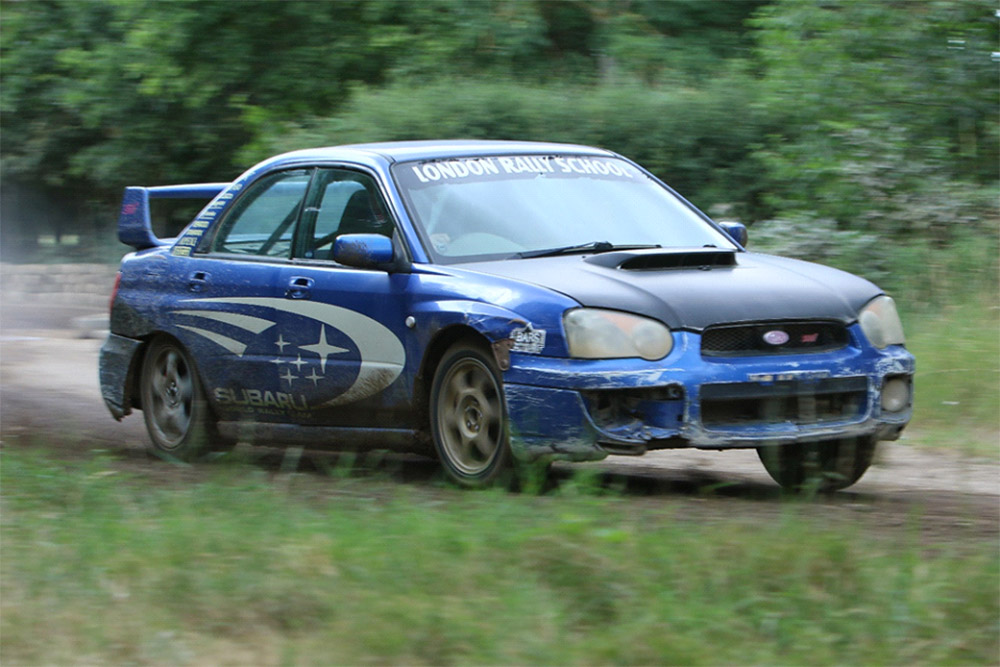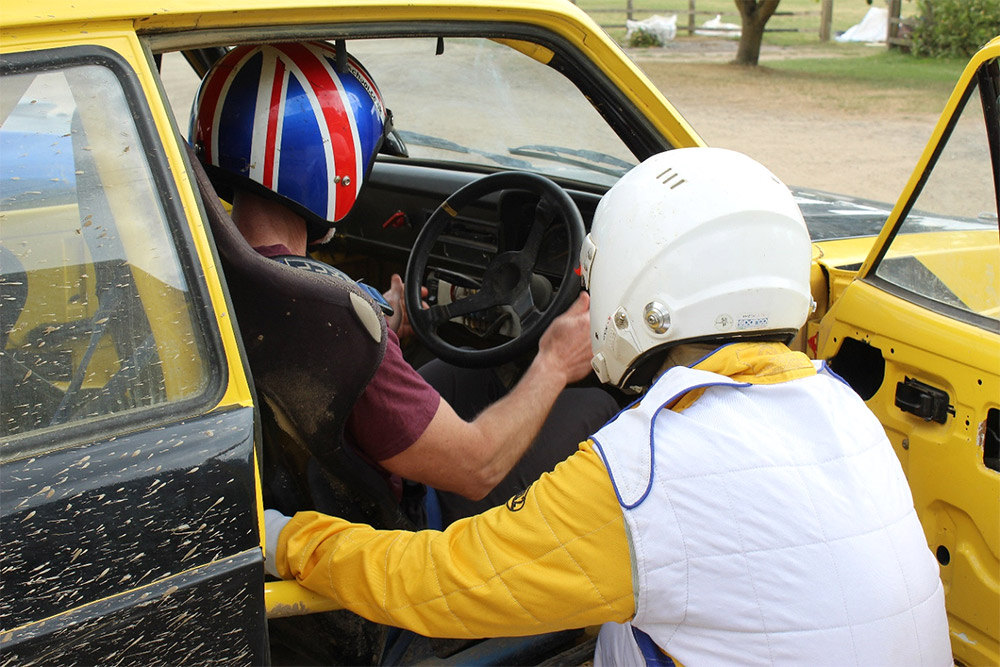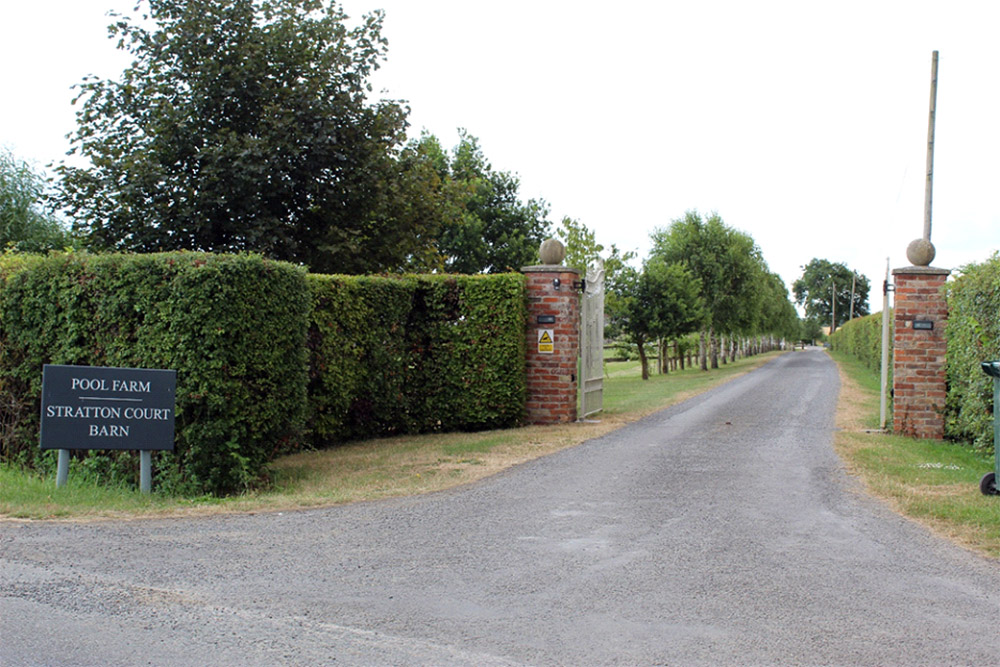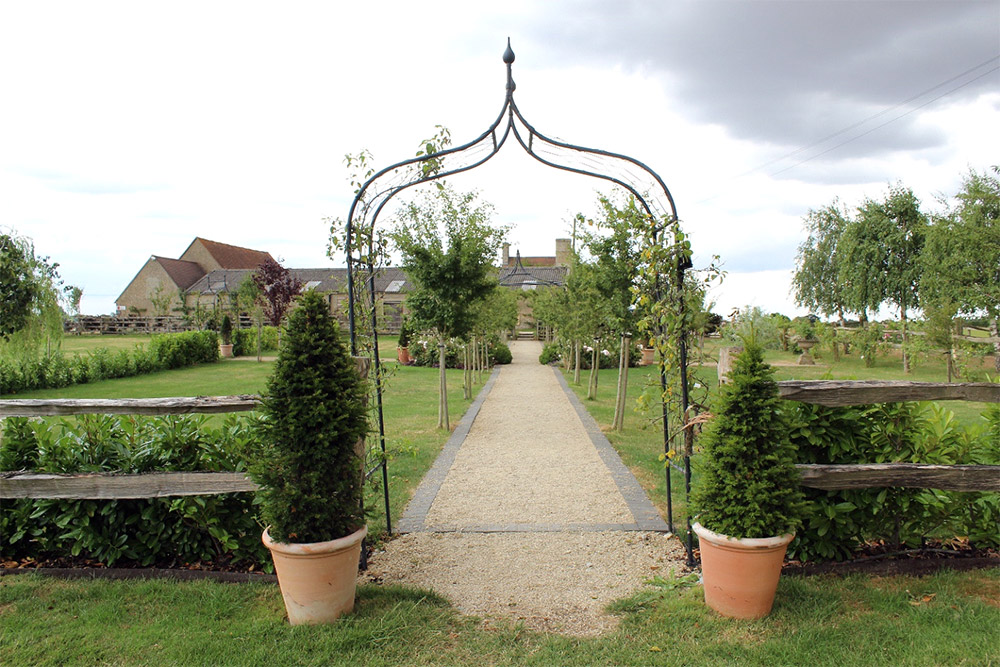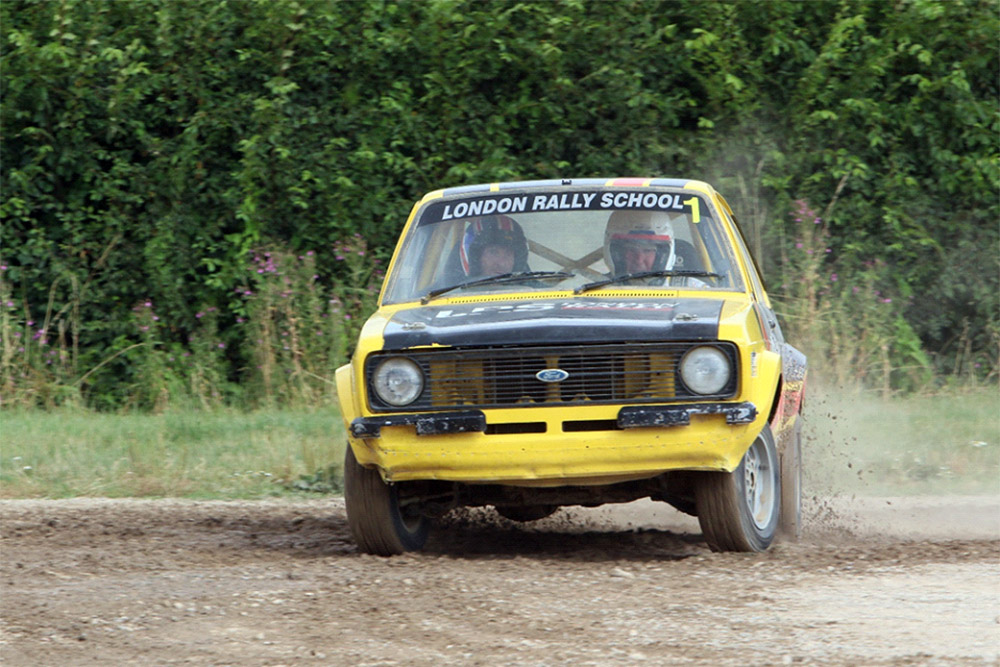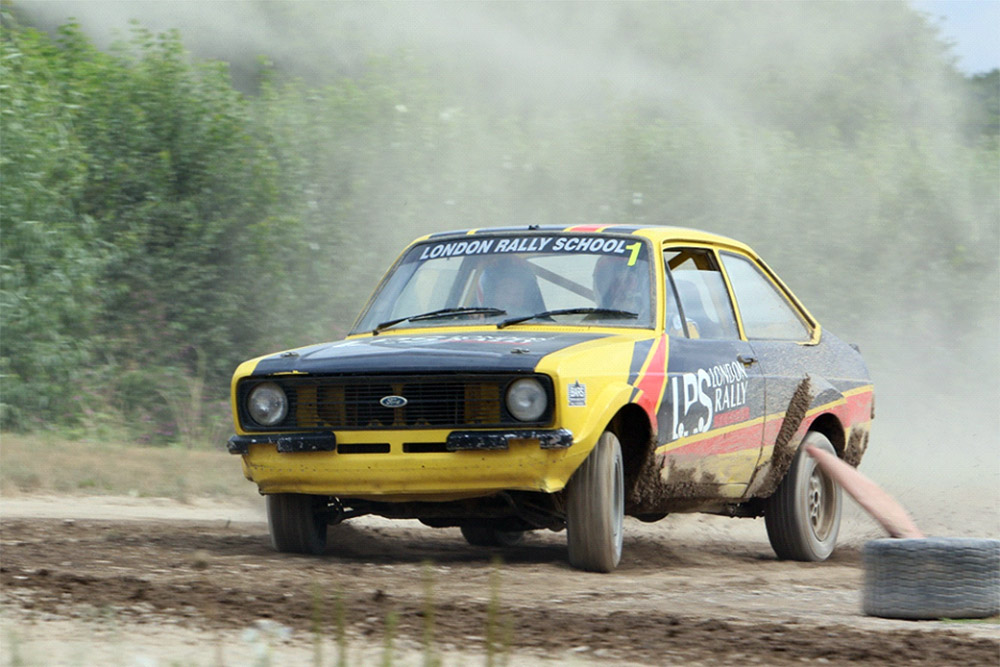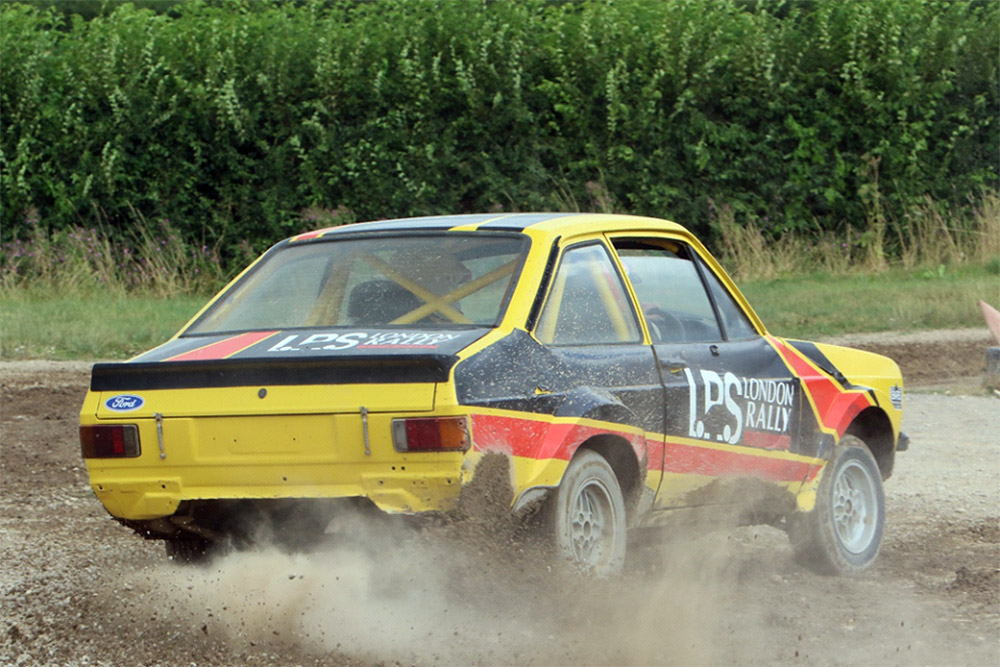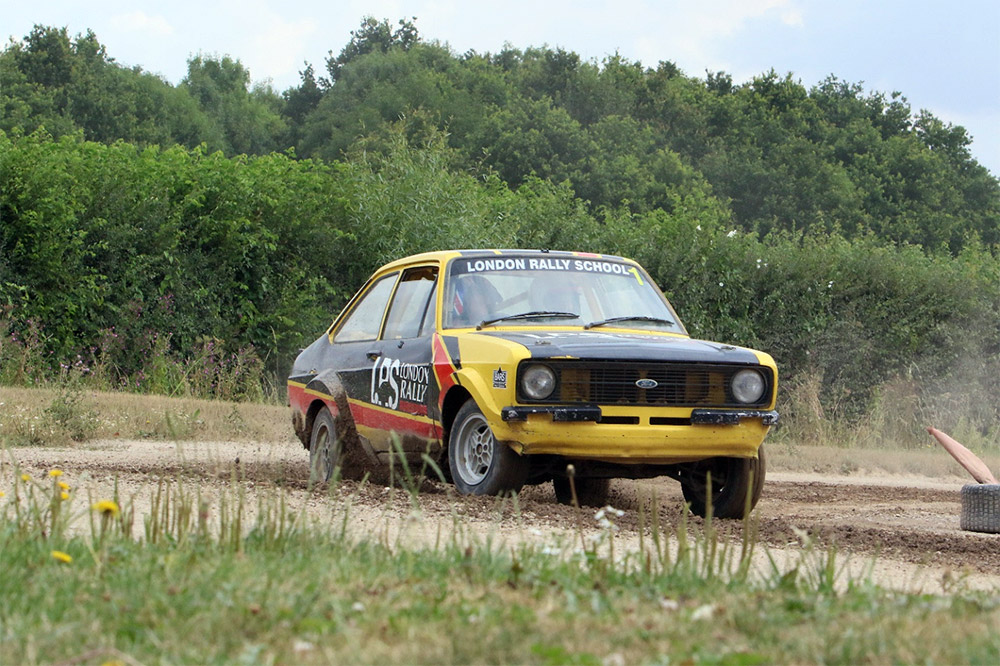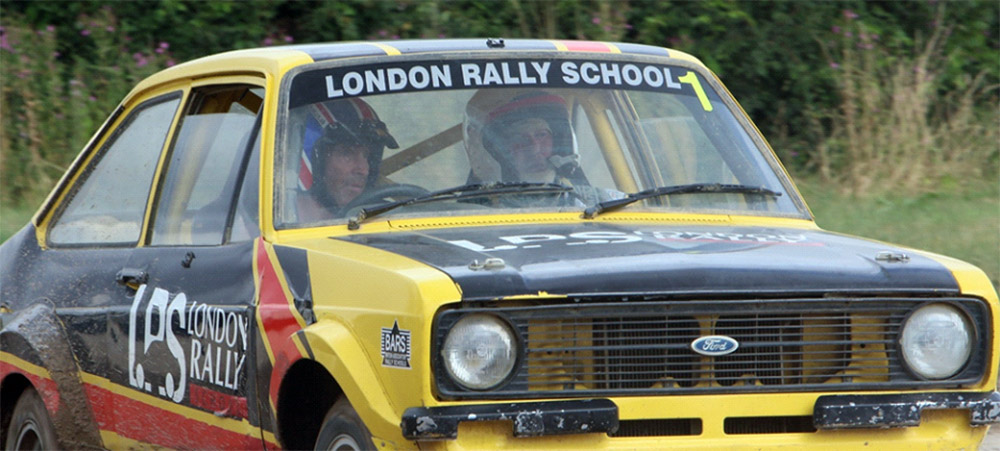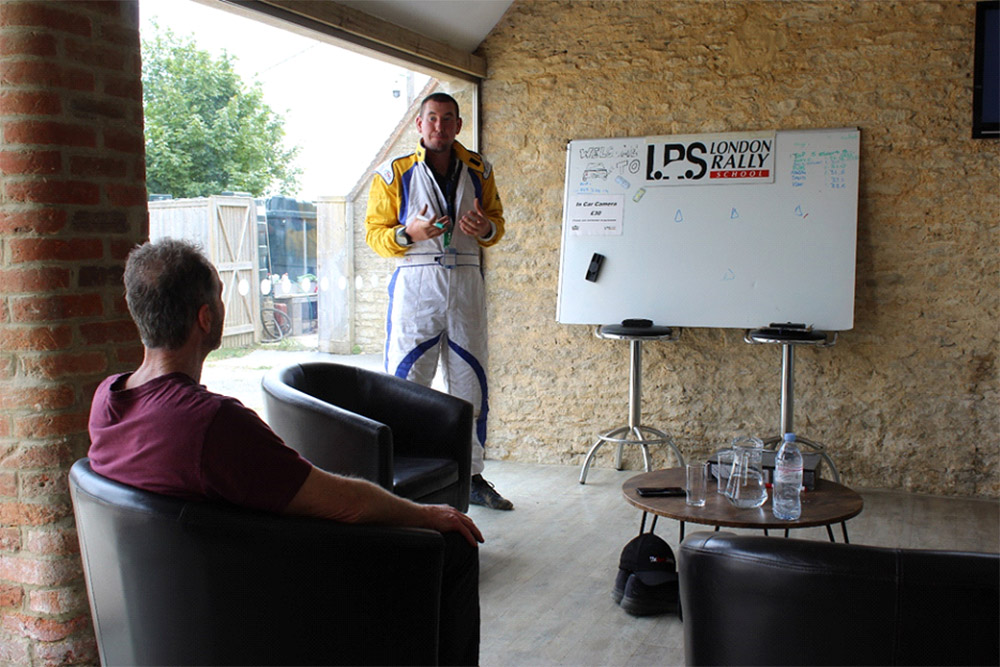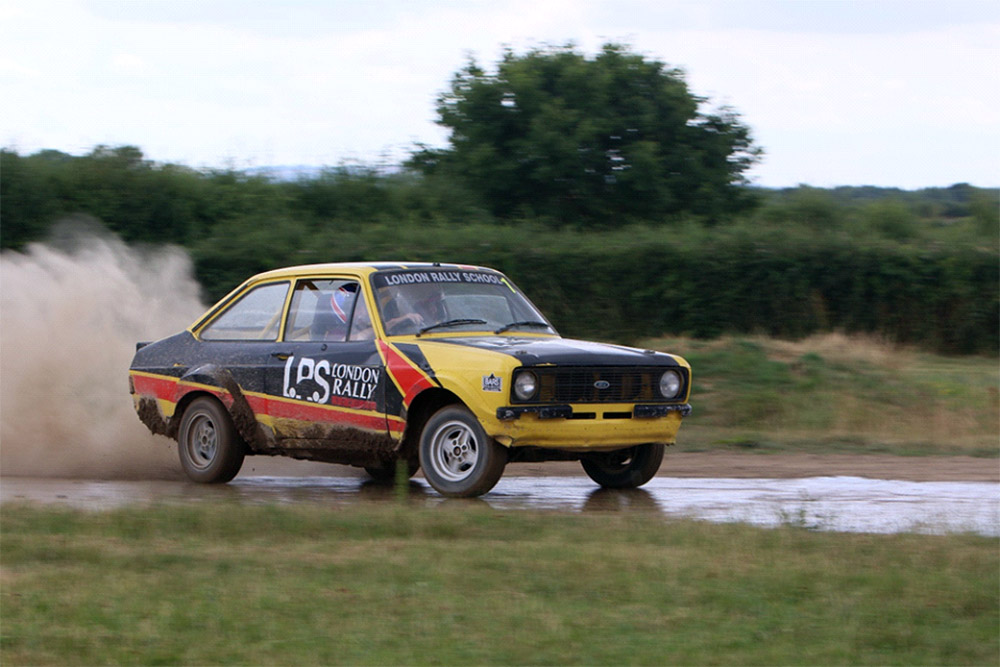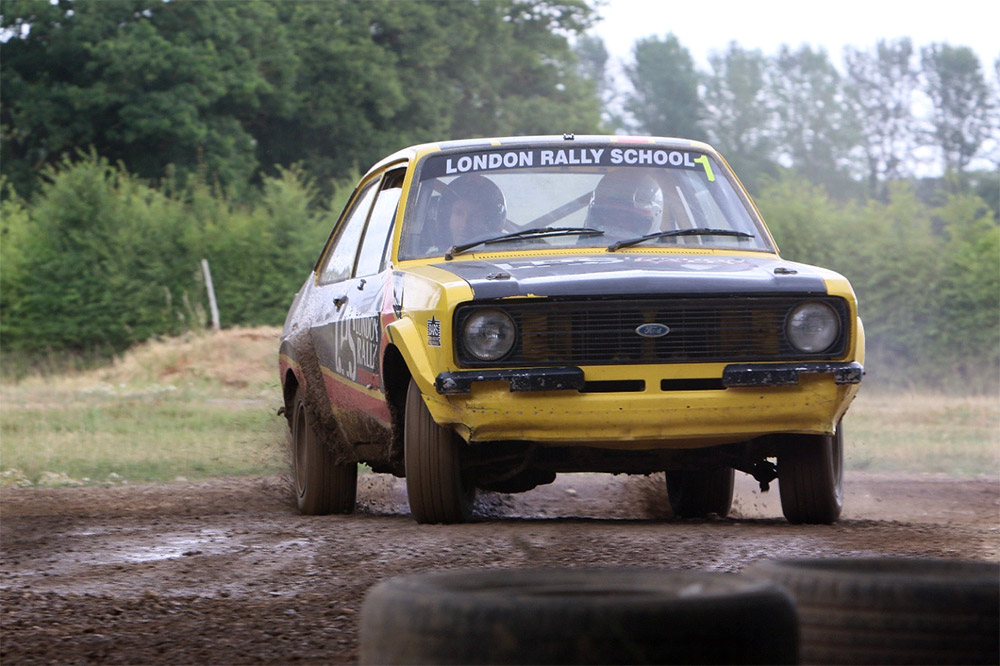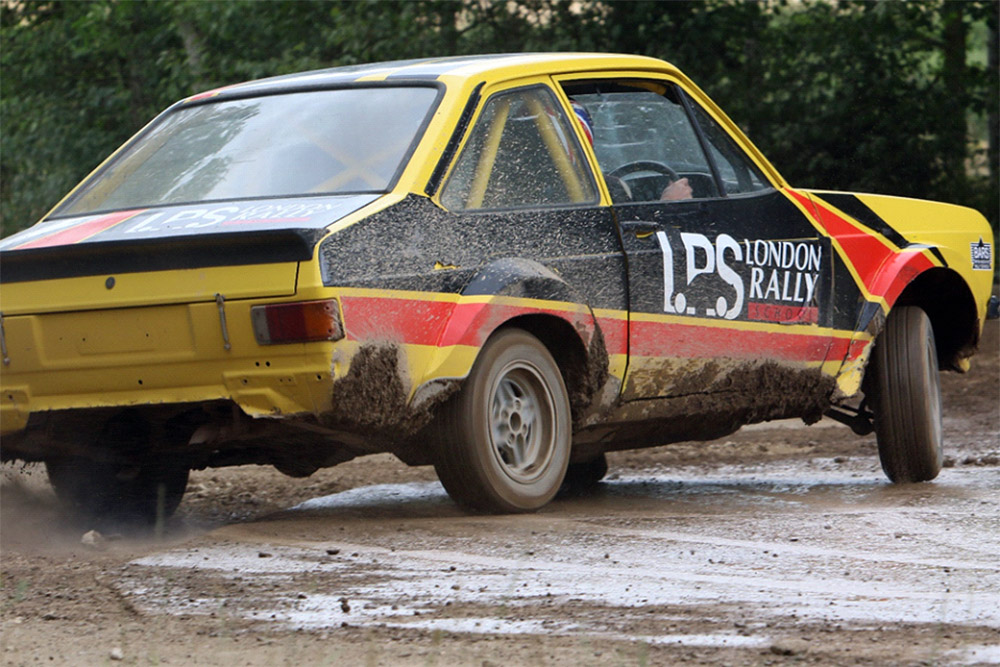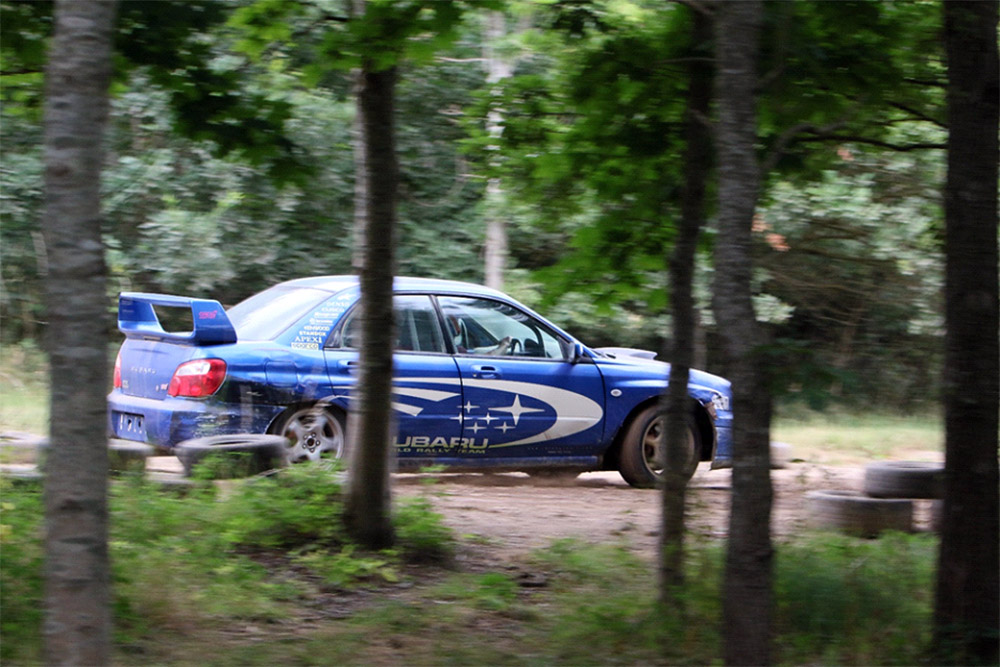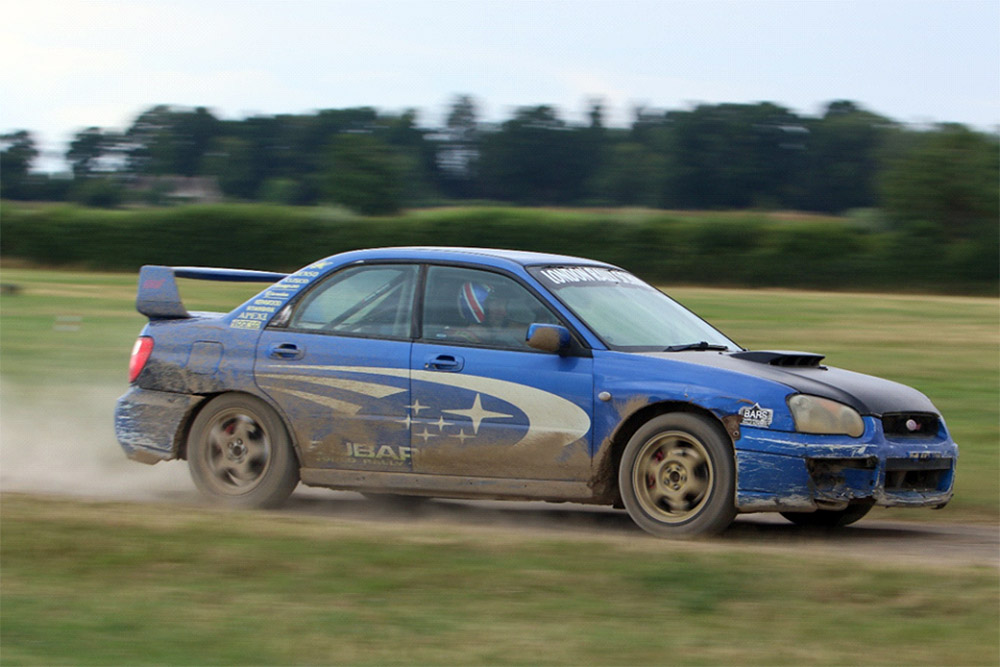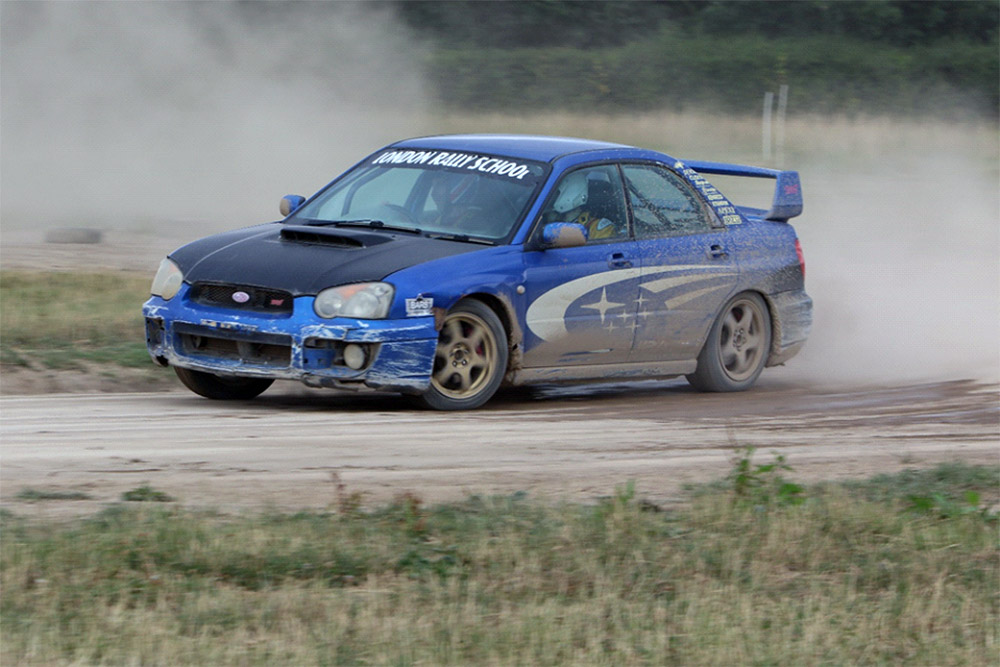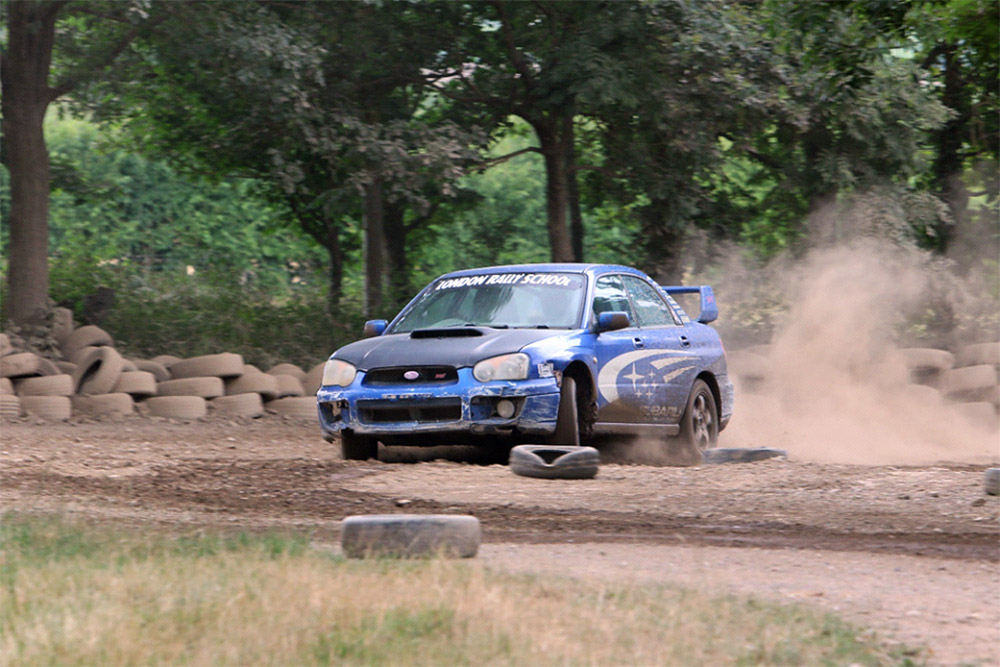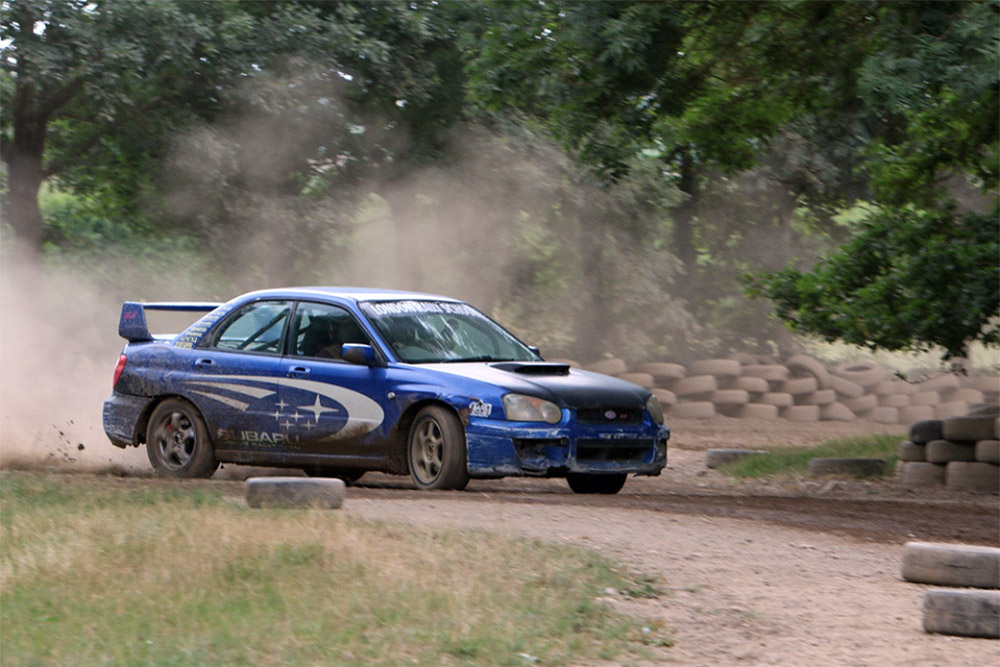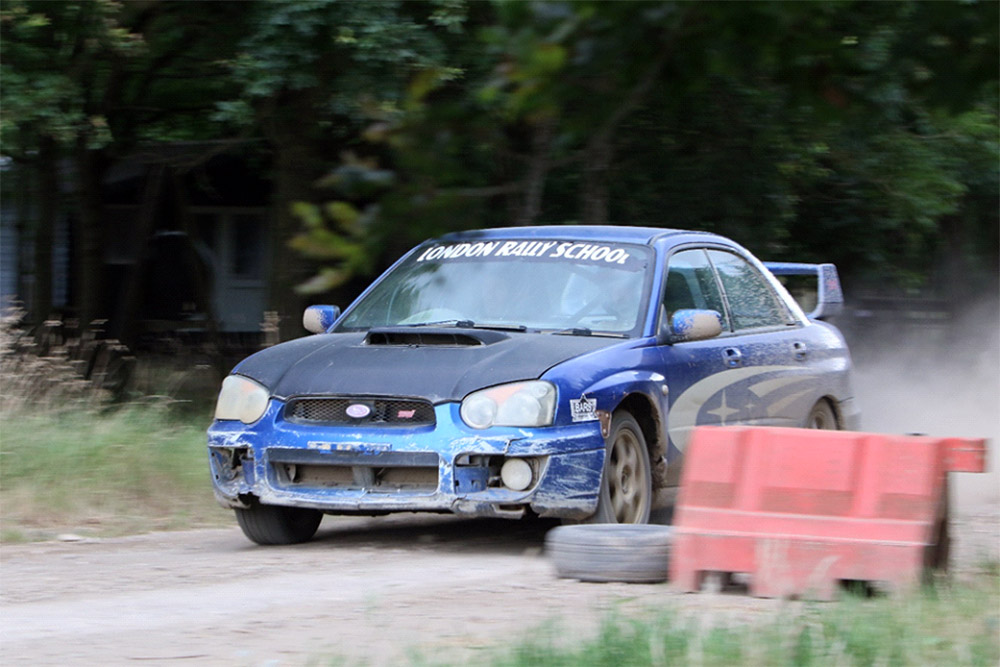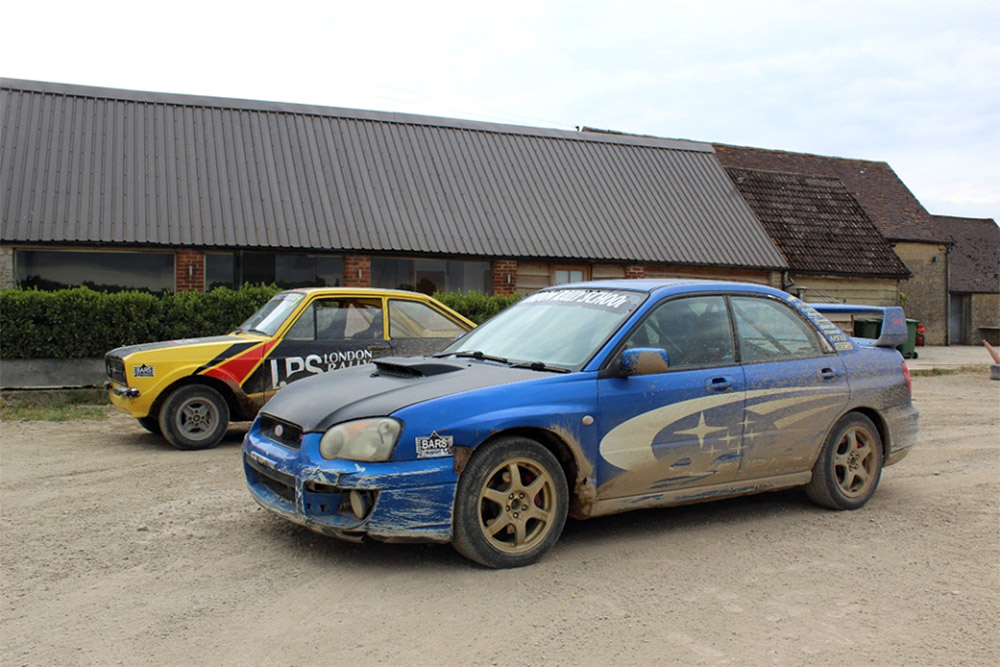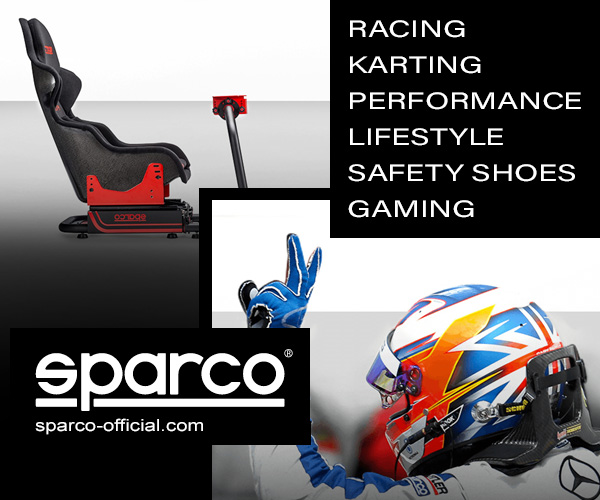The muddy gravel forest roads of the London Rally School are a long way from the high-tech world of Formula One. Headquarters for the Mercedes-AMG and Aston Martin Formula One teams are within a 20-minute drive. Likewise for the historic Silverstone Circuit. Milton Keynes, the home to Red Bull Formula One, is only 35 minutes to the east. All share the common motorsport thread of chasing seconds on a stopwatch, but the similarities diminish from there.
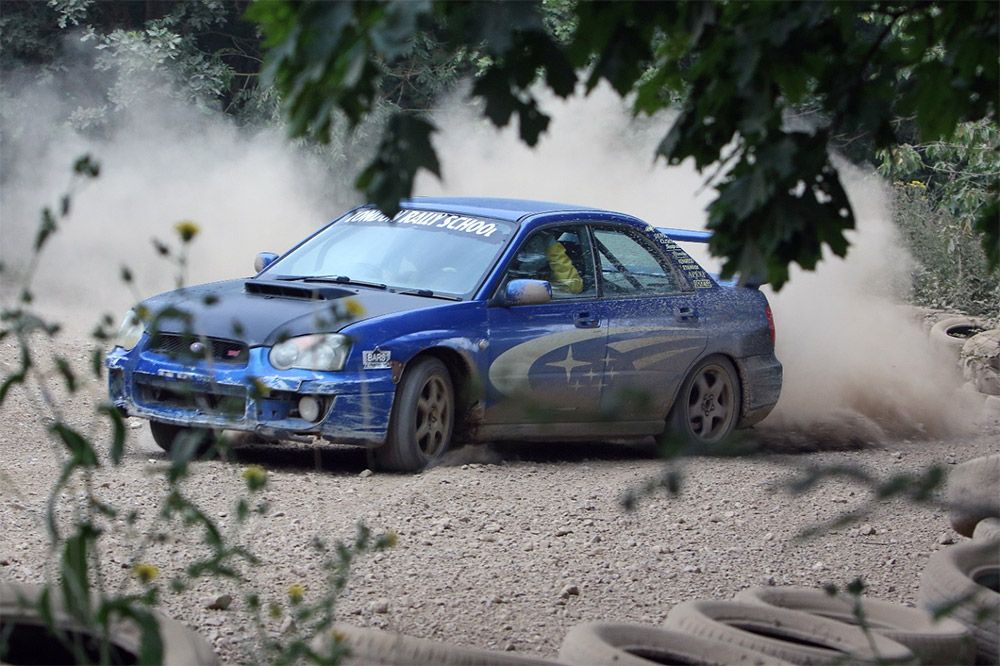 Within the motorsports family, rally racing is the irreverent and eccentric uncle with wild stories and a twinkle in the eye that makes the stories just crazy enough to believe. Forest gravel roads, snowy mountain passages, water crossings, desert dunes, jumps, tarmac and surface changes all mix with the never-say-die survival ethos of getting to the finish to make rally racing its own compelling brand of crazy.
Within the motorsports family, rally racing is the irreverent and eccentric uncle with wild stories and a twinkle in the eye that makes the stories just crazy enough to believe. Forest gravel roads, snowy mountain passages, water crossings, desert dunes, jumps, tarmac and surface changes all mix with the never-say-die survival ethos of getting to the finish to make rally racing its own compelling brand of crazy.
In contrast to high tech motorsports that revolve around computers and wind tunnels, the London Rally School focuses on finding speed the old-fashioned way – the direct connection between driver and car controls. Established in 1989, the London Rally School has a garage of rally cars, open space to practice, a forest rally stage and instructors ready to share their rallying passion. With a long-held respect for the giants of rallying, Speed Journal Principal Jeff Francis took the opportunity to get some seat time of his own and learn how rallying is done.
After traveling through storybook English countryside, a gated entry opened to a long driveway to Pool Farm. The grounds double as both the London Rally School and an outdoor wedding venue (combining both would make for quite a weekend, but unclear how many guests elect that option).
With no other students for the day, the single guest got the benefit of a full day of one-on-one instruction from Michael Stanley. A white board session in the briefing room covered safety and what to expect for the day. The first session focused on fundamental techniques and skills that would be needed later in the forest. A large flat dirt area that might look like a parking lot to others was transformed with a few cones into a rally racing playground.
Michael used a water truck to soak the dirt and then the fun began with a vintage rear wheel drive 1980 Ford Escort Mk2 RS2000 set up for rallying. Similar Fords owned rally racing in the 1970s and 1980s. The Ford Escort is arguably the most successful rally car of all time and the perfect platform to learn. The interior of the right-hand drive Ford was stripped clean of any creature comforts.
Effectively managing the car’s momentum through a corner is the key to rallying. While sliding looks spectacular, it is also the best way to maintain forward progress on an uneven surface with limited traction. Michael positioned three cones across the dirt area as makeshift corners. Cones ready, the exercise challenged the driver to make the car rotate quickly around a cone and then shoot to the next cone and repeat. In addition to the familiar steering wheel and brake and throttle pedals, rallying adds the use of a handbrake to lock the rear tires and make them slide across the surface.
It took some practice to get the cadence of turning the wheel, pulling the handbrake, sliding the car, releasing the handbrake and applying throttle to pivot around the cone. It all needed to happen smoothly and the driver must focus on looking through the corner exit and avoid the temptation to focus on the cone. After several runs, Michael called for a switch from handbraking to footbraking. The effect was similar, but foot braking was easier to modulate which resulted in better car control. Both techniques are viable depending on the needs of an actual rally course but the most important part was demonstrating the use of braking in some form to encourage car rotation.
Next exercise was a mini-slalom, designed to use the new-found braking skills to help maneuver around the cones. In addition to braking, the slalom was also an exercise in weight transfer. Letting off the accelerator at the right moment shifted the weight to the front tires, allowing them to bite for the turn. At the same time, less weight at the rear helped the rear tires break traction and slide. The driver’s challenge was to manage this dynamic and use the sliding rear to pivot the car tightly through the cones. To add a touch of complexity, the dirt dried out with each run making each run different. The driver needed to adapt because the next run might have a different result even with the same driving approach around a cone.
Rally drivers often utilize a technique known as the “Scandinavian Flick” or pendulum turn – a quick move to wag the car’s tail toward the inside of the corner and then aggressively swing the car in the opposite direction around the corner. The effect pins the nose to the inside of the corner while throwing the rear around the turn. The “Scandinavian Flick” owes its name and origin to Finnish rally drivers in the 1960s. Finland has produced many of the sport’s most legendary rally drivers, likely because of youngsters learning to drive in a country with more gravel roads than most other European countries.
The duo retreated inside for a white board debrief and preparation in advance of the rally stage through the woods. The one-on-one nature of the day was ideal. The instructor focused entirely on the single student and tailored immediate guidance and feedback. With the academic exercises complete, it was time to tackle the gravel rally stage. Under typical English summer skies (cloudy, sunny and sprinkles of rain), the Ford Escort once again was called into service.
A brief straight away at speed through an open field plunged into the forest. A succession of fast sweepers, tight turns, and bumps led to a hairpin where the track reversed direction and the driver repeated the course in reverse. Tires bordered the road, the only barrier between race car and forest.
Before anyone tackled the stage, Michael used the water truck to get the surface even more muddy and slippery. Ironically, two turns on concrete were more unpredictable than the rest of the dirt and gravel surface based on how the water was drying or pooling. On particularly wet and rainy days, the driver must handle the added challenge of visibility and working the windshield wipers as the car splashes through puddles.
The jump at speed required a steady hand to keep the car straight and not let the rear end get away. As much as being in the air might make for dramatic pictures, the car can’t turn or accelerate without having tires in contact with the ground. The priority is to navigate the jump to get back on the ground and continue down the road.
It was time to put the lessons of the morning into practice. For a racer used to charting precise lines through corners on paved road course circuits, the sensation of constantly sliding took some adjustment. The correct line was also different from road course racing. Rallying often favors sticking to the inside of the track and pivoting around a tight apex. The inside line gives the rear of the car room to swing around. Conversely on a road course, the objective is to turn in as wide as possible to clip the apex and maintain momentum through corner exit. Pinching the corner with a sharper angle of entry costs momentum and speed.
Understeer into one corner, four-wheel drift through the next, oversteer in the next – time behind the wheel steadily helped refine the dance of steering wheel, throttle and brakes. The benefit of a day at rally school is the chance to make mistakes. Going a little wide here or spinning the car there has no real cost except for the cloud of dust and a brief bruising of personal pride.
With the basics provided by the Ford Escort, the next step was to try out a four-wheel drive Subaru Impreza WRX. The difference was remarkable. All four wheels scratched and clawed at the gravel surface, shooting stone missiles into the surrounding forest and the silent spectators made of wood. The heavier and more powerful all-wheel drive Subaru made a dramatic contrast to the rear-wheel drive Ford. The Subaru tripped the stopwatch eight seconds faster than the Ford, but the Subaru took more work to wrangle.
The Ford gave predictable feedback to the driver, helping to grow confidence to push it further. The rear-wheel drive Ford felt right when all the pieces linked together. The heavier all-wheel drive Subaru, on the other hand, took a bit more to warm up to and become comfortable with, resulting in overdriving the car at times.
Michael took the driver’s seat and showed how to efficiently carve through the forest in the Subaru. His technique minimized steering inputs and found speed without wild corrections or sawing back and forth on the steering wheel. After the demonstration, the student refined his technique and improved. In any form of motorsport, smooth equals fast and more speed emerged with each run.
Tenths of seconds dropped by better managing the slide of the car’s rear end. Over rotating was as bad as under rotating. Thinking about weight transfer also became more natural in helping the car to rotate. With time, the driver becomes more comfortable working with the car than wrestling against it.
Michael also emphasized the need to look down the course. With so much going on, there is an enormous temptation to look down, look at the inside apex of the current corner or look at the trees standing guard just behind corner exit. Anticipating and pro-actively placing the car through the twists is much better than arriving at each challenge and reacting. Looking ahead is a solid principle for any form of high-performance driving but rallying adds the challenge of rocks and water and surface conditions that might have changed since the last time through the same section of road.
For pure fun, the Ford Escort was natural, easy to maneuver and very rewarding to drive. Beginners will relish the ability to toss it around and use the rear-wheel drive to send it sideways. The all-wheel drive Subaru was a challenge with the potential for more outright speed but different driving characteristics. A first timer can’t merely assume the four-wheel drive capability will compensate for a lack of technique – much like a racer on pavement in a smaller car often can’t rely on high horsepower to produce quick lap times. With more time behind the wheel, the driver realizes more of the potential is in sight.
Rally racing has a rich history of cars and characters bonded by an innate car control ability. The superpower to find speed on courses bordered by trees and little margin for error is truly remarkable. There is a reason that names like Colin McRae, Marcus Grönholm, Tommi Mäkinen, Walter Rohl, Carlos Sainz, Sebastian Loeb, and Rene Metge are inscribed in rally recordbooks with places of honor. After a day at the London Rally School, that measure of respect is even greater.
For those looking for a fun day getting dirty, the London Rally School is a perfect outing. The school runs rain-or-shine throughout the year. For those looking for a glimpse of what their racing heroes did in competition, the London Rally School gives a glimpse into how such talented drivers can make something so difficult look so easy. For those considering becoming more involved in amateur rallying, the London Rally School strips the sport down to its bare fundamentals and starts the process of building a rally driving skill set.
The Speed Journal would like to thank the London Rally School and Instructor Michael for their hospitality and for an unforgettable day.



